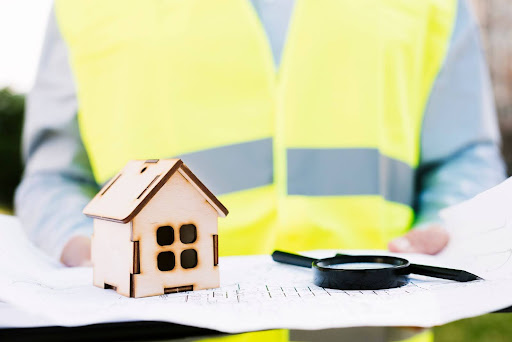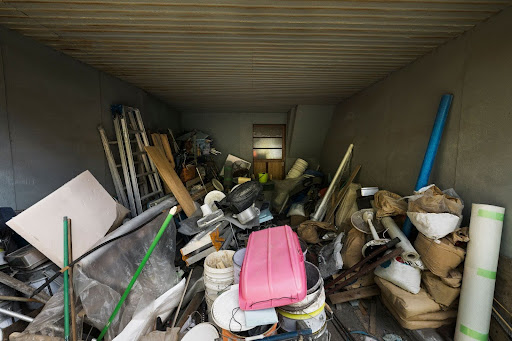Hurricane Helene has left many homes severely damaged by flooding, leaving families in need of major repairs. For some, the damage is so extensive that a partial or full demolition is necessary before rebuilding can begin. Proper demolition is a critical first step to ensure that homes are safe and ready for renovation.
Did you know that demolishing a home without the right permits can lead to fines and delays? You might think about how to demo your house with permitting. Well, Permits help ensure that the demolition process meets local safety standards, protecting both workers and the community. Following the right steps makes rebuilding smoother and more efficient.
One Clearwater Construction is here to assist homeowners through this challenging time. We offer professional demolition services, helping families remove damaged parts of their homes safely and efficiently. Our team is experienced in handling the unique challenges of hurricane-damaged properties, making sure that all work is done with the right permits in place.
Read on to learn how to demo your house with permitting safely and rebuild it better!
Tip 1: Understand the Permitting Process

Did you know that starting a demolition without the right permits can lead to legal trouble? It’s important to know the rules before tearing down any part of your home. Permits help make sure the job is done safely and up to local standards, keeping everyone safe and ensuring a smoother rebuilding process.
Research Local Demolition Permits
How to demo your house with permitting? Well, you should understand what’s this permit. Understanding your local demolition permit requirements is the first step before starting any demolition. These permits ensure that the demolition follows safety codes, protecting not only the homeowners but also the surrounding community.
Permits help prevent issues like debris falling into neighboring properties or exposing hazardous materials. Each city has different rules for demolitions, so it’s important to reach out to your local building department. For example, in North Carolina, specific permits are needed for homes affected by flooding to ensure the safe removal of damaged structures.
- Why Permits Matter: They make sure the demolition is legal, safe, and up to code.
- Who to Contact: Your city’s building department can provide the exact requirements and guide you through the process.
Common Permit Types
When planning a demolition, you may need different types of permits, depending on the project. Common permits include:
- Building Permits: Required for any structural changes or removal of significant parts of a building.
- Environmental Permits: This is needed if the demolition involves hazardous materials like asbestos or lead, often found in older homes.
- Demolition Permits: Specific to tearing down parts of a structure, ensuring that utilities are safely disconnected and debris is handled properly.
Understanding these permits helps homeowners avoid unexpected delays and fines.
Tip 2: Safety First: Preparing Your Home for Demolition
Did you know that even a small mistake during demolition can lead to big accidents? Preparing your home properly before starting the demolition process is key to avoiding dangers. From disconnecting utilities to inspecting the site, each step ensures that the job is done safely and effectively.
At One Clearwater Construction, safety is our top priority. Wondering how to demo your house with permitting? We provide comprehensive safety evaluations before starting any demolition project, ensuring that every precaution is in place. Our team checks for hazards, handles utility disconnections, and sets up protective measures to keep the worksite secure. With our expertise, homeowners can feel confident that their demolition is being handled safely and professionally.
Utility Disconnection
One of the most important steps before any demolition is disconnecting all utilities, such as water, gas, and electricity. This prevents the risk of gas leaks, water damage, or electrical shocks during the demolition. For example, local regulations often require homeowners to provide proof that utilities have been safely disconnected before permits are issued. This ensures that both workers and the surrounding area remain safe during the process. We offer different home remodel services to ensure the best results after this.
- Why It Matters: Active utilities can lead to fires, flooding, or electrocution if not properly turned off.
- How to Do It: Contact your local utility companies to safely shut off these services.
Protect Surrounding Areas
Demolition can be messy, but you can minimize the impact on neighboring homes by setting up protective barriers and using tarps to control dust and debris. Barriers prevent loose materials from damaging nearby properties, while tarps keep dust from spreading. Many local guidelines require the use of dust control measures during demolition to keep the community safe.
- Barriers: Set up fencing around the site to keep debris contained.
- Tarps: Cover open areas to keep dust from spreading and affecting air quality.
Site Safety Inspections
Safety inspections should be conducted both before and during the demolition to identify potential risks. Inspections help catch issues like unstable walls, hidden wiring, or hazardous materials that could pose dangers. According to OSHA guidelines, regular safety checks are critical to maintaining a safe work environment.
- Pre-Demo Check: Inspect for structural issues and weak spots.
- During-Demo: Monitor the site continuously to catch any emerging risks.
Tip 3: Choose the Right Demolition Method
What type of demolition is right for your home or how to demo your house with permitting? The choice between different methods depends on your specific needs and the condition of your property. Understanding the options helps you make a better decision for your home renovation project, ensuring that the process is both safe and effective.
Partial vs. Full Demolition
Partial demolition is ideal for homeowners who want to renovate specific areas of their house. For example, if a home’s kitchen or bathroom has been damaged by flooding, but the rest of the structure is intact, a partial demo allows you to remove only the damaged parts. This approach saves time and money, as it focuses only on the areas that need repair.
Full demolition, on the other hand, involves tearing down the entire structure. This method is often necessary when the damage is so extensive that the home’s safety is compromised. For instance, if a house’s foundation or structure is severely damaged by a storm, a full demo might be the only option. Local building codes often require inspections to determine if a full demolition is needed for safety reasons.
Manual vs. Mechanical Demolition
Manual demolition involves using hand tools like sledgehammers and crowbars to take apart parts of a structure. This method is more precise and is best used when only small sections need to be removed, such as walls or cabinets in a partially damaged room. Manual demolition also reduces the risk of further damage to nearby areas.
Mechanical demolition uses heavy machinery like excavators and bulldozers to tear down larger sections of a house. It’s faster but less precise, making it suitable for larger projects, such as full demolitions or removing parts of a structure that are too dangerous to handle by hand. According to OSHA, using heavy machinery requires additional safety measures to protect workers.
Tip 4: Proper Waste Disposal & Recycling

How to demo your house with permitting & without disposing waste? Well, Disposing of construction waste properly is critical, especially after a natural disaster like Hurricane Helene. Following the right steps ensures safety, and compliance with local regulations, and helps protect the environment. It’s not just about getting rid of debris—it’s about doing it the right way to avoid penalties and reduce waste.
Follow Local Disposal Guidelines
Local authorities have specific rules for disposing of construction debris, especially in flood-affected areas. Here are some key guidelines to keep in mind:
- Separate hazardous materials like asbestos or lead-based paint and dispose of them according to safety regulations.
- Use approved disposal sites for materials such as concrete and drywall to prevent environmental contamination.
- Obtain disposal permits if required, especially when dealing with large volumes of debris.
- Follow FEMA guidelines for waste disposal in disaster-stricken areas
Adhering to these rules ensures that homeowners stay compliant and avoid fines or delays in their projects.
Recycling Materials
Recycling salvageable materials can significantly reduce waste and lower disposal costs. Here are some materials that can be reused:
- Metal: Steel beams and aluminum can be recycled into new construction materials.
- Wood: Wooden beams and planks can be reused in renovations or repurposed for other building projects.
- Concrete: Broken concrete can be crushed and used as a base for new construction.
- Bricks and tiles: Salvaging undamaged bricks and tiles can save money on future repairs.
By recycling these materials, homeowners can reduce the environmental impact of their demolition projects. In some cases, recycling may even reduce permit costs as it decreases the amount of waste headed to landfills.
Tip 5: Hire a Professional for the Job
When it comes to demolishing a home, especially one damaged by a severe storm like Hurricane Helene, hiring a professional is the best way to ensure safety and efficiency. One Clearwater Construction brings the expertise needed to handle even the most challenging demolition projects. Our team is trained to assess structural damage, manage hazardous materials, and follow all local regulations, ensuring that every step of the process is done correctly. Still wondering how to demo your house with permitting? Not anymore!
Experience with Hurricane Recovery
One Clearwater Construction has extensive experience in managing demolitions and remodels after major storms like Hurricane Helene. We understand the unique challenges that come with properties damaged by flooding, such as weakened foundations and mold growth. Our approach makes the transition from demolition to rebuilding smooth and stress-free. By trusting experienced professionals, homeowners can feel confident that their homes will be handled with care and restored to a safe condition.
Free Consultation
Not sure where to start? One Clearwater Construction offers a free consultation to help homeowners understand their options and plan out their demolition projects. During this consultation on how to demo your house with permitting, they provide a detailed assessment of the damage and suggest the best methods for safe demolition. This helps homeowners make informed decisions and get a clear idea of the costs and timelines involved. Reach out today to schedule your free consultation and take the first step toward rebuilding your home.
Reach Out to Us Today!
How to demo your house with permitting? Well, it requires careful planning, obtaining the right permits, and focusing on safety to ensure a smooth process. Choosing professionals like One Clearwater Construction makes the difference, especially when dealing with homes damaged by Hurricane Helene. With our expertise in handling demolitions and remodels, we ensure that everything is done safely, efficiently, and up to code.
If you’re ready to start your home’s recovery journey, One Clearwater Construction is here to help. Contact us today for a free quote and consultation, and let our team guide you through the entire process.
Visit our website for more information and to see how we can make your home safe again.
For your knowledge, We partner with local design experts and wholesale pricing Pro Source. You can further check out their Instagram along with their main retailor @susiesellsstpete). So, if you are a snow bird or looking for second vacation home, we recommend both Susie who knows Pinellas County and beach rentals very well.


